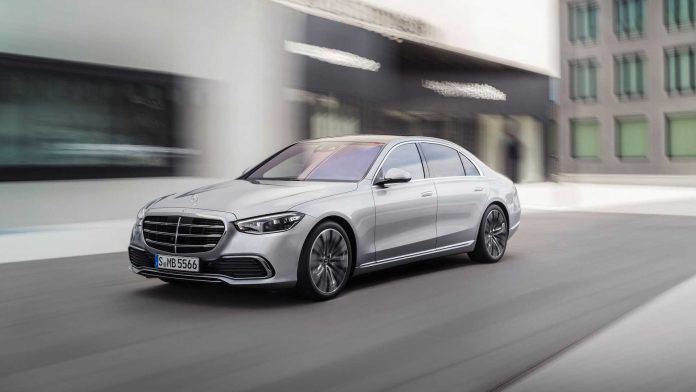After five years, Mercedes will operate a facelift to the flagship S-Class. The Mercedes S-Class will get a new, more generously sized grille and revised engines.
With the entry into the electric era, the lifecycles of luxury models with conventional engines have lengthened. Thus, while previous generations of the Mercedes S-Class had a life cycle of seven years (W140 -1991/1998, W220 – 1998/2005, and W222 2013-2020) and eight years (W221- 2005/2013), it seems that the seventh generation, W223, will have a life cycle of 9-10 years. Unveiled on 2 September 2020, it has been on the market for four and a half years, and a facelift is planned for the second half of 2025, more than five and a half years after launch. This strategy means the car will be on the market for at least another 3-4 years after the facelift, approaching a 9-10 year career.
Bigger radiator grille
Typically, the facelift of the flagship S-Class hasn’t come with much in the way of aesthetic novelties. But this time, the change will be more significant, with the upcoming S-Class getting a larger radiator grille, that will extend lower, below the license plate. The headlights and taillights have also been slightly upgraded.
Inside, we don’t expect any spectacular changes. We don’t think the Mercedes S-Class will get the EQS Hyperscreen, which hasn’t been successful. Mercedes now offers it free on the EQS, after previously costing an extra 8,500 euros, except for the EQS 580 and AMG EQS, on which it was standard.
The MBUX system with zero-layer technology is one of the best in the industry, and we expect it to come with the next generation of processors and artificial intelligence. Also, where legislation allows, Mercedes will offer a Level 3 autonomous driving system that will operate over a wider range of speeds, from 3 to 110 kph.
Revised V8 M177 engine
The engine range won’t change much, with the Mercedes S-Class already having two PHEV versions with an electric range of over 100 km. It looks like diesel, with a high-performance dual-catalyst emission control system, will remain in the line-up, as will the classic V8 with mild hybrid technology for which there is still demand in many parts of the world. The M177 V8 engine will be upgraded and will get more power than the 503 PS it currently has.
While the Mercedes E-Class, launched in 2023, is the last E-Class with a combustion engine, the German automaker has made no such announcement for the S-Class. Given that Mercedes recently revised its electric strategy, announcing that it has postponed by five years the moment it wants 50% of sales to be electric models, the S-Class will likely get a new generation around 2028-2029 based on the conventional MRA II platform.
The future S-Class will likely co-exist with the upcoming EQS, which will no longer be built on the large MB.EA platform due to poor sales but on a modified and upgraded 800V version of the dedicated EVA2 electric platform, called EVA2-M.









